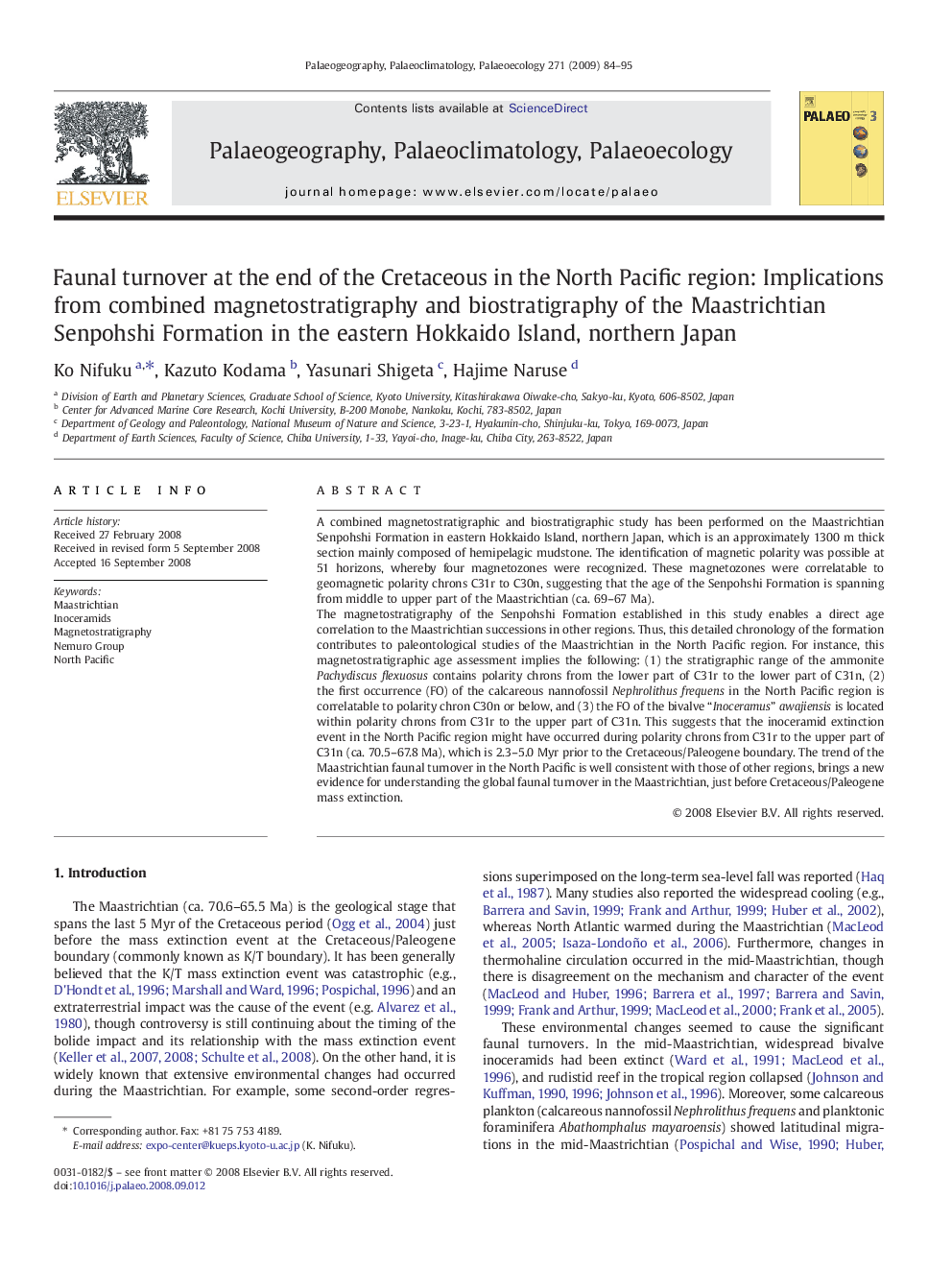| کد مقاله | کد نشریه | سال انتشار | مقاله انگلیسی | نسخه تمام متن |
|---|---|---|---|---|
| 4468145 | 1622312 | 2009 | 12 صفحه PDF | دانلود رایگان |

A combined magnetostratigraphic and biostratigraphic study has been performed on the Maastrichtian Senpohshi Formation in eastern Hokkaido Island, northern Japan, which is an approximately 1300 m thick section mainly composed of hemipelagic mudstone. The identification of magnetic polarity was possible at 51 horizons, whereby four magnetozones were recognized. These magnetozones were correlatable to geomagnetic polarity chrons C31r to C30n, suggesting that the age of the Senpohshi Formation is spanning from middle to upper part of the Maastrichtian (ca. 69–67 Ma).The magnetostratigraphy of the Senpohshi Formation established in this study enables a direct age correlation to the Maastrichtian successions in other regions. Thus, this detailed chronology of the formation contributes to paleontological studies of the Maastrichtian in the North Pacific region. For instance, this magnetostratigraphic age assessment implies the following: (1) the stratigraphic range of the ammonite Pachydiscus flexuosus contains polarity chrons from the lower part of C31r to the lower part of C31n, (2) the first occurrence (FO) of the calcareous nannofossil Nephrolithus frequens in the North Pacific region is correlatable to polarity chron C30n or below, and (3) the FO of the bivalve “Inoceramus” awajiensis is located within polarity chrons from C31r to the upper part of C31n. This suggests that the inoceramid extinction event in the North Pacific region might have occurred during polarity chrons from C31r to the upper part of C31n (ca. 70.5–67.8 Ma), which is 2.3–5.0 Myr prior to the Cretaceous/Paleogene boundary. The trend of the Maastrichtian faunal turnover in the North Pacific is well consistent with those of other regions, brings a new evidence for understanding the global faunal turnover in the Maastrichtian, just before Cretaceous/Paleogene mass extinction.
Journal: Palaeogeography, Palaeoclimatology, Palaeoecology - Volume 271, Issues 1–2, 1 January 2009, Pages 84–95